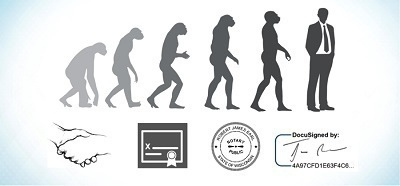 What is a contract? In real estate, it is a large pile of documents that require multiple signatures from multiple parties. Housing contracts are a pretty narrow view of contracts, though. According to Wikipedia and the New Oxford American Dictionary, a contract is “a written or spoken agreement having a lawful object entered into voluntarily by two or more parties, each of whom intends to create one or more legal obligations between them.” This is a pretty good definition, but it is also a little confusing. In a broader sense, a contract binds parties together in mutual obligation.
What is a contract? In real estate, it is a large pile of documents that require multiple signatures from multiple parties. Housing contracts are a pretty narrow view of contracts, though. According to Wikipedia and the New Oxford American Dictionary, a contract is “a written or spoken agreement having a lawful object entered into voluntarily by two or more parties, each of whom intends to create one or more legal obligations between them.” This is a pretty good definition, but it is also a little confusing. In a broader sense, a contract binds parties together in mutual obligation.
A handshake could be a contract. This used to be, and in some parts of the world still is, the de facto contracting method. Can you imagine buying a house with a handshake? When agreements started to get more involved, they were put to paper and parties signed with a pen and ink. This is a process I am sure you all are familiar with. As the stakes got higher, more security was needed and notarization became standard. Now, we live in the information age. There is a growing expectation that things – all things – will be woven into the digital experience and connected through the Internet. The Zeitgeist has changed, and electronic signature is the inevitable next step in the evolution of the agreement process.
Electronic signatures face unique problems that were less pressing with previous forms of contractual agreement. In 2000 with the passage of the ESIGN Act, Federal law essentially stated that no agreement can be held unenforceable simply because it is electronic. This does not mean, however, that just because a signature is electronic that it is legally enforceable. To be legally enforceable, signatures have to be secure. In real estate, this is particularly important because as you leverage electronic signature to accelerate contracts, you want to be sure your clients actually bought the house they thought they bought.
Two unique problems of electronic signatures are: (1) how do I know that the person who clicked “I agree” is the person that they say they are, and (2) how do you ensure that the underlying documents you are signing haven’t been tampered with or changed.
With a handshake, you are physically present with the person you are making an agreement with. You know who they are, and if you need to settle a default on an agreement, you can swagger into the saloon and settle the agreement. And unlike a printed contract, an electronic contract can more easily be edited with little or no evidence that the contract has been changed.




